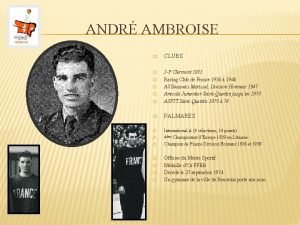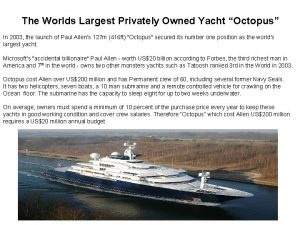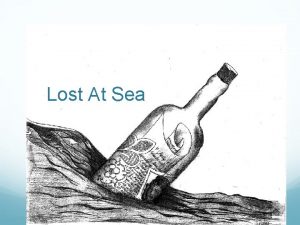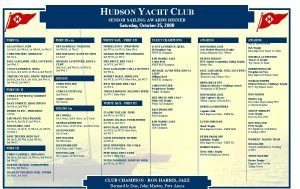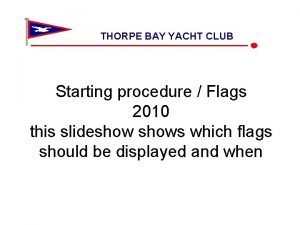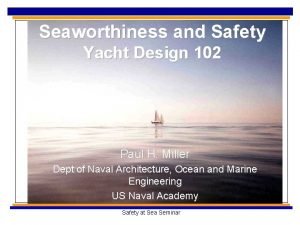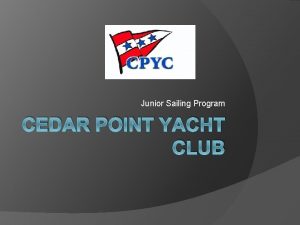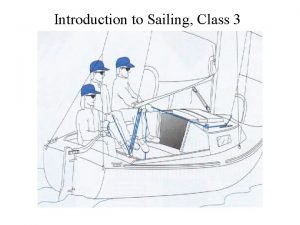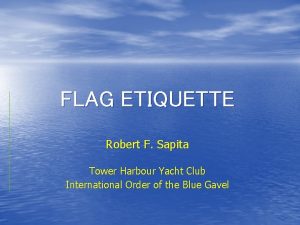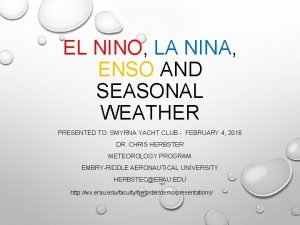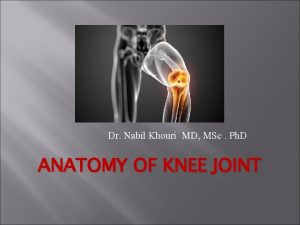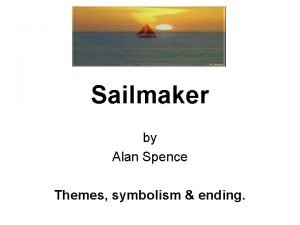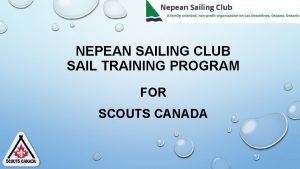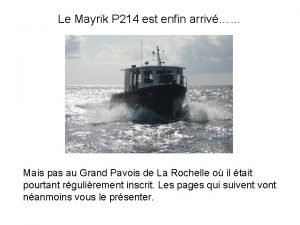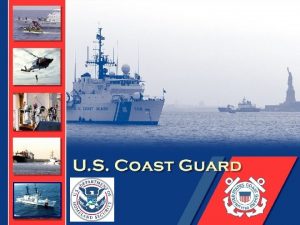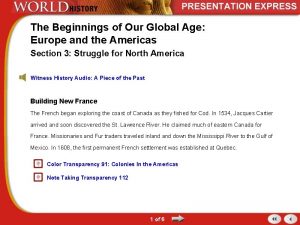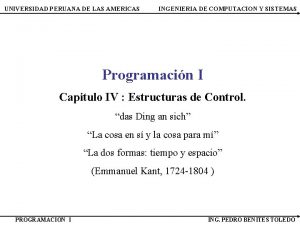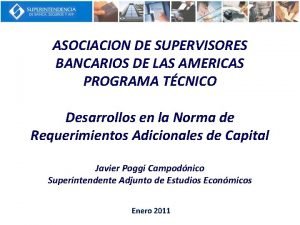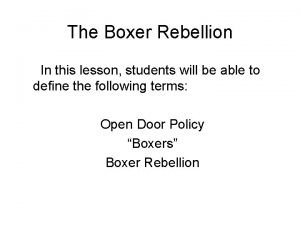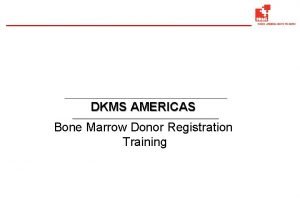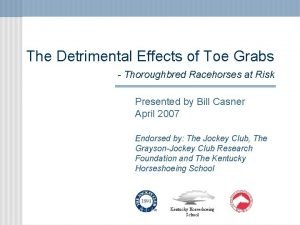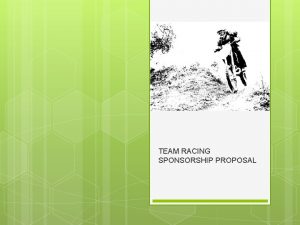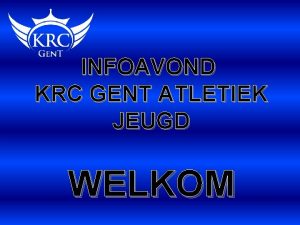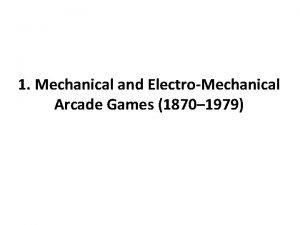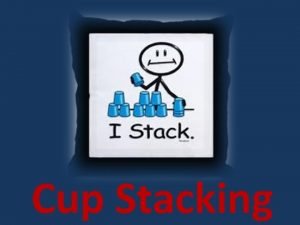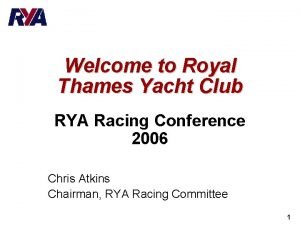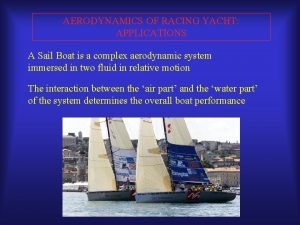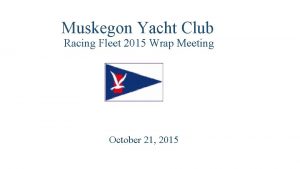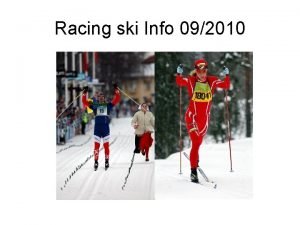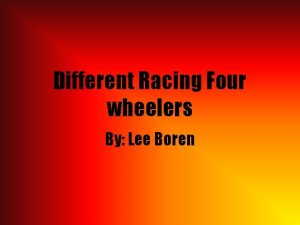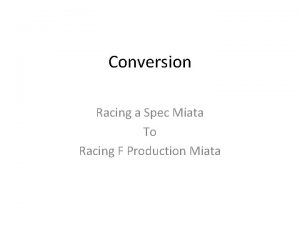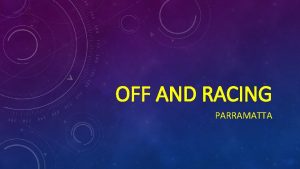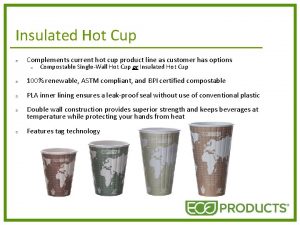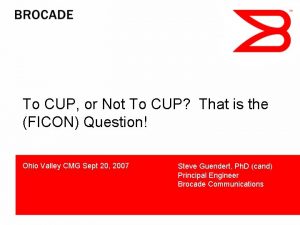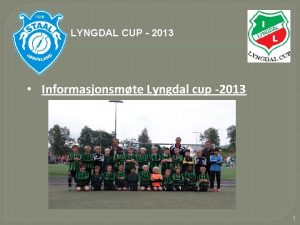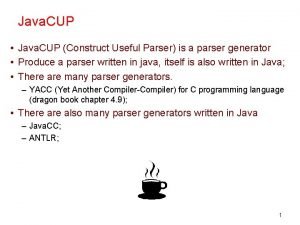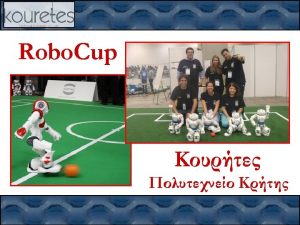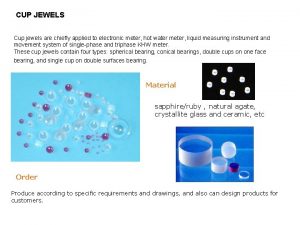Computer technology in Americas Cup Yacht Racing Dr








































































- Slides: 72

Computer technology in America’s Cup Yacht Racing Dr. J. Craig Mudge Pacific Challenge ee 380 Colloquium Computer Systems Laboratory Stanford University Feb 19, 2003 www. pacific-challenge. com J. Craig Mudge ee 380 Stanford University 2/19/2003 1

J. Craig Mudge ee 380 Stanford University 2/19/2003 2

6 legs in America’s Cup course Alinghi Race 2: Time Delta in Min: seconds Start J. Craig Mudge ee 380 Stanford University 0 1 26: 11 12 2 24: 14 -34 3 26: 37 -26 4 22: 43 -14 5 27: 33 -26 finish 25: 43 7 2/19/2003 3

How a sailboat moves ahead • Downwind – Push on sails • Upwind – Lift from sails – Lift from keel • Context – Changes in wind strength and direction – Changes in wave shape, direction, and frequency J. Craig Mudge ee 380 Stanford University 2/19/2003 4

Defender vs Challenger Video clips of last couple of days racing - what to watch for J. Craig Mudge ee 380 Stanford University 2/19/2003 5

J. Craig Mudge ee 380 Stanford University 2/19/2003 6

Elementary theory Aerodynamic forces from sails Leeway angle hydrodynamic Lift J. Craig Mudge ee 380 Stanford University drag (or resistance) 2/19/2003 7

Tacking up wind Zig-zagging up wind towards our destination Wind direction The boat that sails at an angle “closer to the wind” gets upwind faster J. Craig Mudge ee 380 Stanford University 2/19/2003 8

Polar representations of boat speed Radial representation of Boat speed at different true wind angles for one windspeed 5 10 20 J. Craig Mudge ee 380 Stanford University (Adapted from 12 metre designed by S Killing) 2/19/2003 9

A list of computer uses Area Type Design of hull Hull appendages Design of sails Hydrodynamic modeling (to reduce drag) Hydrodynamic modeling (lift and drag) Aerodynamic modeling; photogrammatic Computational Fluid Dynamics (CFD) Two boat testing Navigation/tactics/ strategy Campaign Modeling, analysis, and visualization – sails, hulls, appendages Data collection and data management Performance parameters; predictions for next leg Project/financial management, travel, web site Weather Sports media Forecast wind patterns for each race Visualization of race course from telemetry J. Craig Mudge ee 380 Stanford University 2/19/2003 10

Acknowledgements Jim Antrim, naval architect Richard Burton, sailor and computer scientist Margot Gerritsen, Computational Fluid Dynamics (CFD) specialist, Stanford Yacht Research Stan Honey, record-breaking navigator Olivier Le Diouris, sailor and software engineer Eric Steinberg, electronics on America True Brian Tramontana, PARC multimedia * ESPN for video clips * americascup. yahoo. com for photos * Virtual Spectator for screenshots of race course J. Craig Mudge ee 380 Stanford University 2/19/2003 11

Outline Hull design - both canoe body and appendages Sail design Materials - hull and sails Two-boat tuning Winning races J. Craig Mudge ee 380 Stanford University 2/19/2003 12

Adding heeling/righting moments to two forces Aerodynamic forces from sails Leeway angle Aerodynamic Heeling moment J. Craig Mudge Hydromechanical Righting moment hydrodynamic Heeling Lift ee 380 Stanford University Righting Drag (or resistance) 2/19/2003 13

Lateral stability Heeling moment from sails Extreme ballast from bulb (20 tons of a 24 ton IACC boat) Lead ballast is placed in the lower portion of the keel. J. Craig Mudge ee 380 Stanford University 2/19/2003 14

Alternative to lead bulb for righting moment Sydney Harbour 18 ft skiffs J. Craig Mudge ee 380 Stanford University 2/19/2003 15

More 18 ft skiffs from Sydney A very influential design - on modern racing yachts - on latest Olympic class (49 er) Yendys 1924 J. Craig Mudge ee 380 Stanford University 2/19/2003 16

Newer IACC boats are much narrower J. Craig Mudge ee 380 Stanford University 2/19/2003 17

upright heeled Resistance components - upwind Added waves Induced (from leeway) Heel (extra viscous+wave) Wave (pushing the water) Viscous (friction from wetted surface) (Fig 5. 4, Larsson, 2000) J. Craig Mudge ee 380 Stanford University 2/19/2003 18

Appendages: side force and resistance Side force (also called Lift) From both keel and rudder Lift/drag tradeoff Aspect ratio Bulb shape Turbulence Tip vortices if depth is limited End wall not practical, so Winglets used Winglets also provide lift when boat heeled J. Craig Mudge ee 380 Stanford University 2/19/2003 19

Surface pressure and Streamlines around bulb From M Sawley (2002) at Switzerland’s EPFL, in Lausanne, an advisor to Alinghi J. Craig Mudge ee 380 Stanford University 2/19/2003 20

An overview of numerical modeling in yacht design • Fundamental tool is a predictor of performance to compare different designs – Called a VPP (Velocity Prediction Program) -- since early 70 s – Given a wind speed and wind angle, a VPP predicts boat speed, heel, and leeway J. Craig Mudge ee 380 Stanford University 2/19/2003 21

Modeling boat speed - VPP (Milgram, 1998) J. Craig Mudge ee 380 Stanford University 2/19/2003 22

An overview of numerical modeling in yacht design • Fundamental tool is a predictor of performance to compare different designs – Called a VPP (Velocity Prediction Program) -- since early 70 s – Given a wind speed and wind angle, a VPP predicts boat speed, heel, and leeway • The balance equations are solved – Keel lift and side force – Sails lift and drag – Overturning moment • Modeling these forces in the balance equations is (currently) approximate – Navier Stokes equations (set of differential equations governing the motion of a fluid) are central part – Models are combination of empirically based and approx of N-S equations J. Craig Mudge ee 380 Stanford University 2/19/2003 23

Overall Hull Design process 1. Decide range of wind strength, sea state 2. Coarse exploration of shapes by numerical modeling, incl CFD 3. Then tank testing 4. Then build one real thing 5. Refine with two-boat testing J. Craig Mudge ee 380 Stanford University 2/19/2003 24

An overview of numerical modeling in yacht design …contd. Computational Fluid Dynamics (CFD) RANS (Reynolds-Averaged Navier-Stokes) is a more computationally tractable form of the N-S equations. In RANS, the flow variables are split into one time-averaged (mean) part, and one turbulent part. The mean values are solved. And the turbulent part is expressed in terms of the mean part. J. Craig Mudge ee 380 Stanford University 2/19/2003 25

An overview of numerical modeling in yacht design …contd. Typical computer resources are these at EPFL, Lausanne SGI Origin 3800 128 MIPS R 14000 Pc (500 Mhz; 64 GB RAM) Swiss T 1 64 DEC Alpha ev 6 Pc (500 Mhz; 32 GB RAM) Dell Precision 530 2 Pentium Xeon Pc (1. 7 GHz, 2 GB RAM) Largest RANS simulations: 5 million mesh cells: 10 hours on 16 Pc c. f. AC 2000 campaign: 2 million mesh cells: 10 hours on 12 Pc Origin 2000 J. Craig Mudge ee 380 Stanford University 2/19/2003 26

Unveiling January 7, 2003 Alinghi Oracle J. Craig Mudge ee 380 Stanford University 2/19/2003 27

Different winglet configurations and bulb shapes J. Craig Mudge ee 380 Stanford University 2/19/2003 28

Different winglet configurations and bulb shapes Oracle Alinghi Team NZ (based on photos at the unveiling 1/7/03) J. Craig Mudge ee 380 Stanford University 2/19/2003 29

Universities working in yacht design • • • University of Auckland Technical University of Berlin Chalmers University of Technology Kiel University EPFL, Lausanne, Switzerland MIT University of Maryland University of Michigan University of Southampton Stanford Yacht Research Center for Turbulence Research, Stanford J. Craig Mudge ee 380 Stanford University 2/19/2003 30

Outline Hull design Sail design Materials Two-boat tuning Winning races J. Craig Mudge ee 380 Stanford University 2/19/2003 31

Positioning and shaping Crew positions the sails according to required angle of attack - from polars Sailors shape the sail using control lines attached to the edge of a sail J. Craig Mudge ee 380 Stanford University 2/19/2003 32

What is the right shape? • Sailmaker designs each sail for a range of wind strength and wave type. (Sailor selects a sail from the suite, according to expected conditions. ) • Want nice laminar flow, without separation and turbulence • Lift vs drag curve; polars again • Both wind tunnels and CFD used J. Craig Mudge ee 380 Stanford University 2/19/2003 33

Vertical characteristics of wind Apparent wind is the wind we feel on the boat, as opposed to the true wind. As we go from deck to top of mast, the wind increases in strength and apparent direction Has implications for both sail designers and sailors (sail trimming) 8 7 5 J. Craig Mudge ee 380 Stanford University 2/19/2003 34

Design of downwind sails J. Craig Mudge ee 380 Stanford University 2/19/2003 35

Wind tunnels in sail design University of Auckland Twisted Flow Wind Tunnel Courtesy U Auckland, Seahorse magazine J. Craig Mudge ee 380 Stanford University 2/19/2003 36

Outline Hull design Sail design Materials - hull, sails, and rig Two-boat tuning Winning races J. Craig Mudge ee 380 Stanford University 2/19/2003 37

Ocean racers have to be stronger Courtesy Richard Bennett J. Craig Mudge ee 380 Stanford University 2/19/2003 38

Forces on rig and hull J. Craig Mudge ee 380 Stanford University 2/19/2003 39

J. Craig Mudge ee 380 Stanford University 2/19/2003 40

Prominent logo of sponsor J. Craig Mudge ee 380 Stanford University 2/19/2003 41

One. Australia 1995 J. Craig Mudge ee 380 Stanford University 2/19/2003 42

Older sail material Courtesy: Mariners’ Museum J. Craig Mudge ee 380 Stanford University 2/19/2003 43

Materials and shaping Flax Cotton Japara silk various polyesters (with or without film) (Kevlar is the best known of the aramid fibers) Carbon Desired 3 D shape in CAD model J. Craig Mudge ee 380 Stanford University Panel shape Mold shape Sew panels Apply layers (liquid/fiber) 2/19/2003 44

Improved sail shape with modern materials J. Craig Mudge ee 380 Stanford University 2/19/2003 45

Novel designs Lexcen keel Oracle kite Canting keel J. Craig Mudge ee 380 Stanford University 2/19/2003 46

Courtesy: Rosenfeld Ben Lexcen’s winged keel 1983 J. Craig Mudge ee 380 Stanford University 2/19/2003 47

Oracle kite J. Craig Mudge ee 380 Stanford University 2/19/2003 48

Canting keel and canard Wild Oats and Schock 40 (Reichel-Puch, Dynayacht, 2002) J. Craig Mudge ee 380 Stanford University 2/19/2003 49

Outline Hull design Sail design Materials Two-boat tuning Winning races J. Craig Mudge ee 380 Stanford University 2/19/2003 50

Why two-boat tuning • Shortcomings of numerical modeling and tank testing • Sensors not accurate enough – A two boat lead at end of a 3 mile leg requires boat speed 0. 7% accuracy; – Accuracy on wind direction, strength also difficult hard to get accuracy; J. Craig Mudge ee 380 Stanford University 2/19/2003 51

Instruments and data logging on J/105 Kookaburra Data from instruments: - Wind speed (true and apparent); Boat position; Heading; Boat speed (through water and over the ground); Etc etc J. Craig Mudge ee 380 Stanford University 2/19/2003 52

A leg of a race selected for further analysis J. Craig Mudge ee 380 Stanford University 2/19/2003 53

Log of Wind Oscillations during a race 221º J. Craig Mudge ee 380 Stanford University 299º 2/19/2003 54

Two-boat tuning – Team NZ J. Craig Mudge ee 380 Stanford University 2/19/2003 55

Outline Hull design Sail design Materials Two-boat tuning Computer use in America’s Cup races J. Craig Mudge ee 380 Stanford University 2/19/2003 56

Performance • Performance is a function of – Preparation before the race – Start – Boatspeed • • • Design of hull and appendages Design of sails Boat handling by crew Strategy Tactics Helmsman’s skill – Navigation J. Craig Mudge ee 380 Stanford University 2/19/2003 57

Currents Hauraki Gulf, NZ Feb 19 Time: 1400 Courtesy David Brayshaw, Go. Flow J. Craig Mudge ee 380 Stanford University 2/19/2003 58

Currents Hauraki Gulf, NZ Feb 19 Time: 1139 Maximum ebb Courtesy David Brayshaw, Go. Flow J. Craig Mudge ee 380 Stanford University 2/19/2003 59

The start J. Craig Mudge ee 380 Stanford University 2/19/2003 60

The start This nice result is helped by accurately estimating time to the starting line (Alinghi Race 3) Display of computed parameters time to start time to line tack+acceleration+ travel time (for boat speed, index into polars) J. Craig Mudge ee 380 Stanford University 2/19/2003 61

On each leg Display time to next mark time in each tack remaining time to layline target boat speed etc Predict next leg - given assumptions on wind and mark, use polars to display: course, wind angles, J. Craig Mudge ee 380 Stanford University 2/19/2003 62

Topics not covered • • Effect of mast on flow past mainsail Trim tabs on aft end of keel Heads-up display in navigator’s sunglasses Modeling interaction of hull and sails Modeling of currents Analysis of materials and structure of hulls Techniques in rig design and analysis J. Craig Mudge ee 380 Stanford University 2/19/2003 63

Bibliography Joubert, P N. and Oosannen van, P. The Development of the Winged Keel for Twelve Metre Yachts, Rev. 1986. Killing, Steve. Yacht Design Explained, Norton, New York, 1998. Larsson, L and Eliasson, R. Principles of Yacht Design, 2 nd ed. International Marine, Camden, 2000. Milgram, Jerome H. Fluid Mechanics for Sailing Vessel Design, Annual Review of Fluid Mechanics, 1998 30: 613 -653. Marchaj, C A. Sail Performance. International Marine, London, 1996. Sawley, M L. Numerical Flow Simulation for the America’s Cup. EPFL Newsletter, 2002. Whidden, Tom. The art and science of sails, St. Martins Press, New York, 1990. • Email mudge@pacific-challenge. com for a copy of this bibliography J. Craig Mudge ee 380 Stanford University 2/19/2003 64

High performance yachts in the future Some possibilities 1. Materials – Surfaces • Low drag (MEMS? ) • Vortex generators (a la Formula 1 cars) – also slots, porosity 2. Control of sail shape – Auto-adjust (but without stored energy) 3. Rig and masts 4. Better numerical modeling – Downwind sail design – Sail shape optimization, including design in unsteady conditions (waves, …) – Coupling of accurate CFD to structural analysis – Hull-sail interaction Rules will have to change in some cases. J. Craig Mudge ee 380 Stanford University 2/19/2003 65

J. Craig Mudge ee 380 Stanford University 2/19/2003 66

J. Craig Mudge ee 380 Stanford University 2/19/2003 67

Maltese Falcon ideal test case ■ Design shape 160 ft flying shape ■ Square-rigged ■ Twist onset flow small ■ Extensive experimental data 280 ft Stanford Yacht Research 65 ft J. Craig Mudge ■ Prototype testing appealing (Gerritsen, Doyle, Perkins) ee 380 Stanford University 2/19/2003 68

J. Craig Mudge ee 380 Stanford University 2/19/2003 69

Kiwi clip on or hula J. Craig Mudge ee 380 Stanford University 2/19/2003 70

3 DL Contrast with panelled sails J. Craig Mudge ee 380 Stanford University 2/19/2003 71

Review: computer use Area Type Design of hull Hull appendages Design of sails Hydrodynamic modeling (to reduce drag) Hydrodynamic modeling (lift and drag) Aerodynamic modeling; photogrammatic Computational Fluid Dynamics (CFD) Two boat testing Navigation/tactics/ strategy Campaign Modeling, analysis, and visualization – sails, hulls, appendages Data collection and data management Performance parameters; predictions for next leg Project/financial management, travel, web site Weather Sports media Forecast wind patterns for each race Visualization of race course from telemetry J. Craig Mudge ee 380 Stanford University 2/19/2003 72
 Street racing technology orchies
Street racing technology orchies Octopus yacht position
Octopus yacht position Yacht slide montenegro
Yacht slide montenegro Lost at sea grahame knox
Lost at sea grahame knox Hudson yacht group
Hudson yacht group Msf4343
Msf4343 Www.mhhe.com/yacht 2019
Www.mhhe.com/yacht 2019 Monhull
Monhull Infatuation yacht charter
Infatuation yacht charter Maltese falcon yacht collision
Maltese falcon yacht collision Chomy yacht
Chomy yacht Writing without words
Writing without words Positron yacht
Positron yacht Mes amis yacht
Mes amis yacht Cedar point yacht club
Cedar point yacht club Chorusline yacht
Chorusline yacht Yacht club flag etiquette
Yacht club flag etiquette Mi nina yacht
Mi nina yacht Medial articular facet of patella
Medial articular facet of patella Intrinsic yacht
Intrinsic yacht Club accounts
Club accounts Sailmaker
Sailmaker Nepean sailing club
Nepean sailing club Mayrik yacht design
Mayrik yacht design Spanish caste system in the americas
Spanish caste system in the americas Spanish colonization of the americas
Spanish colonization of the americas Soroptimist international of the americas
Soroptimist international of the americas Art of the americas before 1300
Art of the americas before 1300 Ib history paper 1 rights and protest past papers
Ib history paper 1 rights and protest past papers Spanish north america
Spanish north america Declaración sobre seguridad en las américas 2003
Declaración sobre seguridad en las américas 2003 Spanish cast system
Spanish cast system Americas guardians mc
Americas guardians mc Centro internacional de convenciones
Centro internacional de convenciones The beginnings of our global age europe and the americas
The beginnings of our global age europe and the americas Transversal de las americas
Transversal de las americas Openedge multi-tenant database
Openedge multi-tenant database Chapter 24 the americas and oceania
Chapter 24 the americas and oceania New worlds the americas and oceania
New worlds the americas and oceania Chapter 24 new worlds the americas and oceania
Chapter 24 new worlds the americas and oceania Chapter 20 worlds apart the americas and oceania
Chapter 20 worlds apart the americas and oceania The beginnings of our global age europe and the americas
The beginnings of our global age europe and the americas Chapter 10 global cuisine 1 the americas
Chapter 10 global cuisine 1 the americas Open door policy cartoon
Open door policy cartoon Universidad peruana de las americas
Universidad peruana de las americas The americas on the eve of invasion
The americas on the eve of invasion State building in the americas and africa
State building in the americas and africa Americas global position
Americas global position Chapter 2 exploring the americas study guide
Chapter 2 exploring the americas study guide Chapter 2 exploring the americas answers
Chapter 2 exploring the americas answers Asociación de supervisores bancarios de las américas
Asociación de supervisores bancarios de las américas Rochem americas
Rochem americas Nist frame
Nist frame Chapter 16 people and empires in the americas
Chapter 16 people and empires in the americas Americas open door policy
Americas open door policy The americas in the age of independence
The americas in the age of independence Greater miami aviation association
Greater miami aviation association Risk minds international
Risk minds international Dkms americas
Dkms americas Mateo bixby
Mateo bixby Wholesale itf
Wholesale itf Hteamericas
Hteamericas Theatron of the americas
Theatron of the americas Geonetcast americas
Geonetcast americas Geo
Geo Dkms america
Dkms america Hte americas
Hte americas Chris penwell
Chris penwell Toe grabs
Toe grabs Motorsport sponsorship proposal
Motorsport sponsorship proposal Krc gent atletiek
Krc gent atletiek Georgia horse racing
Georgia horse racing Electromechanical games
Electromechanical games
